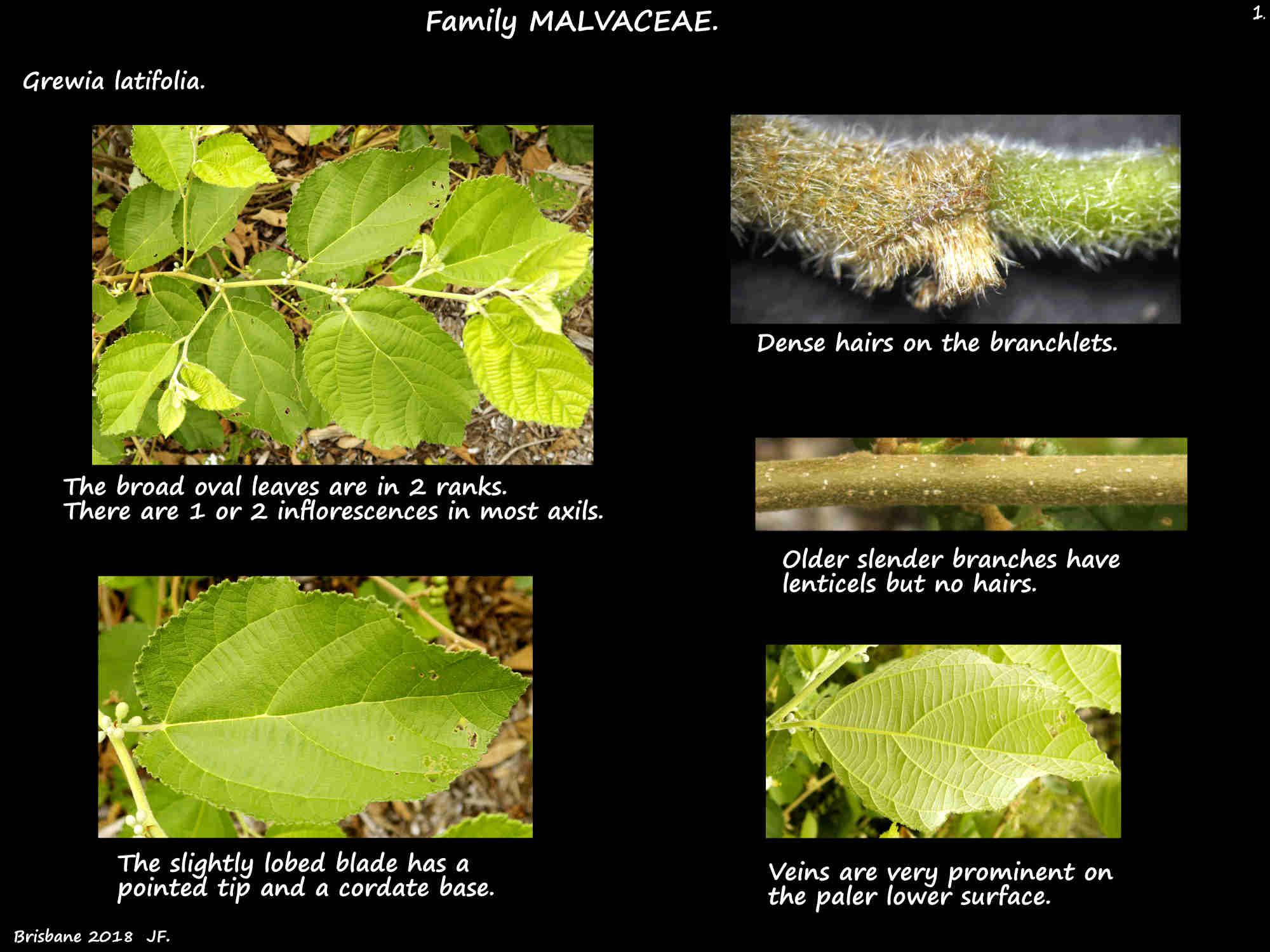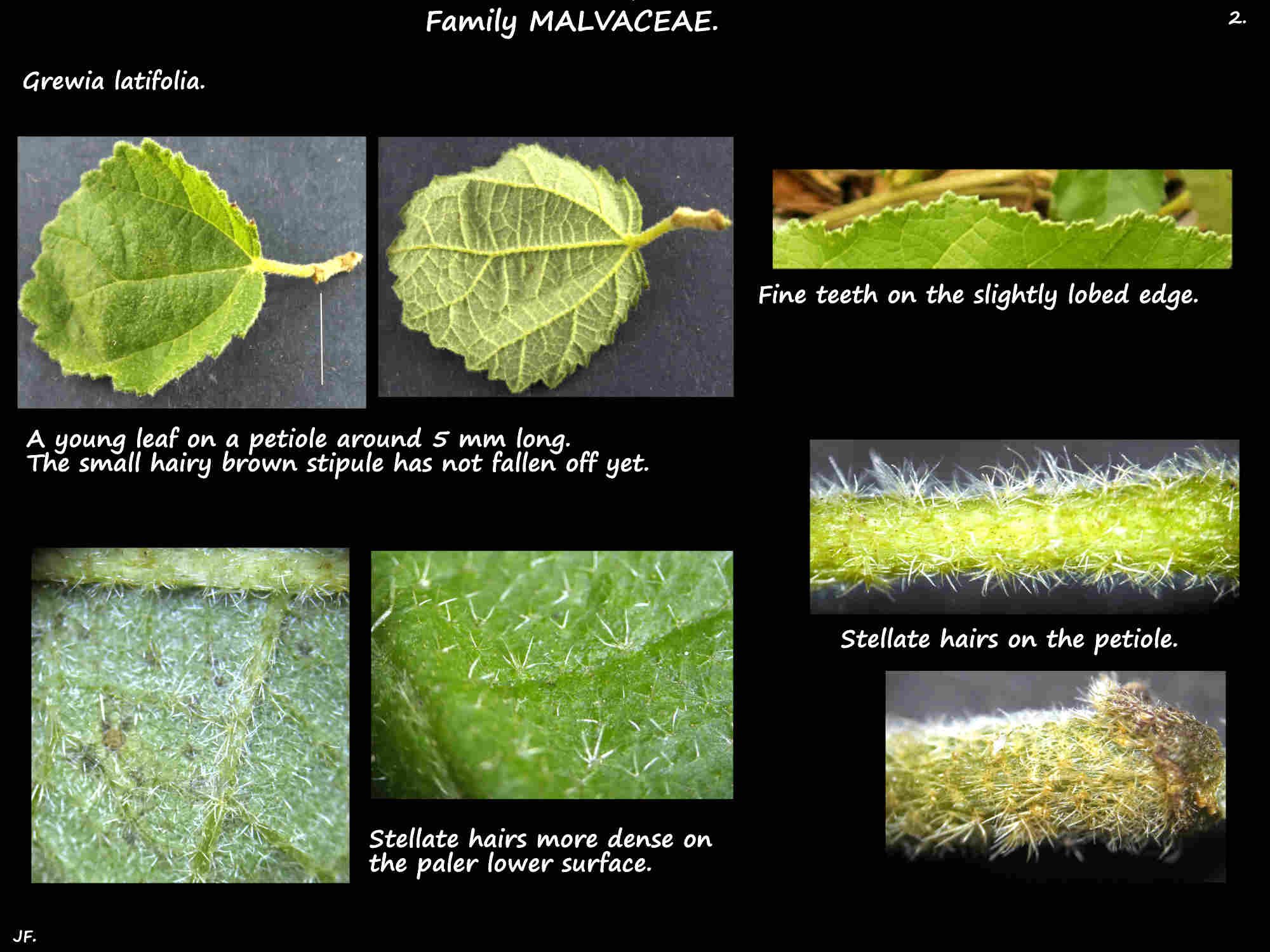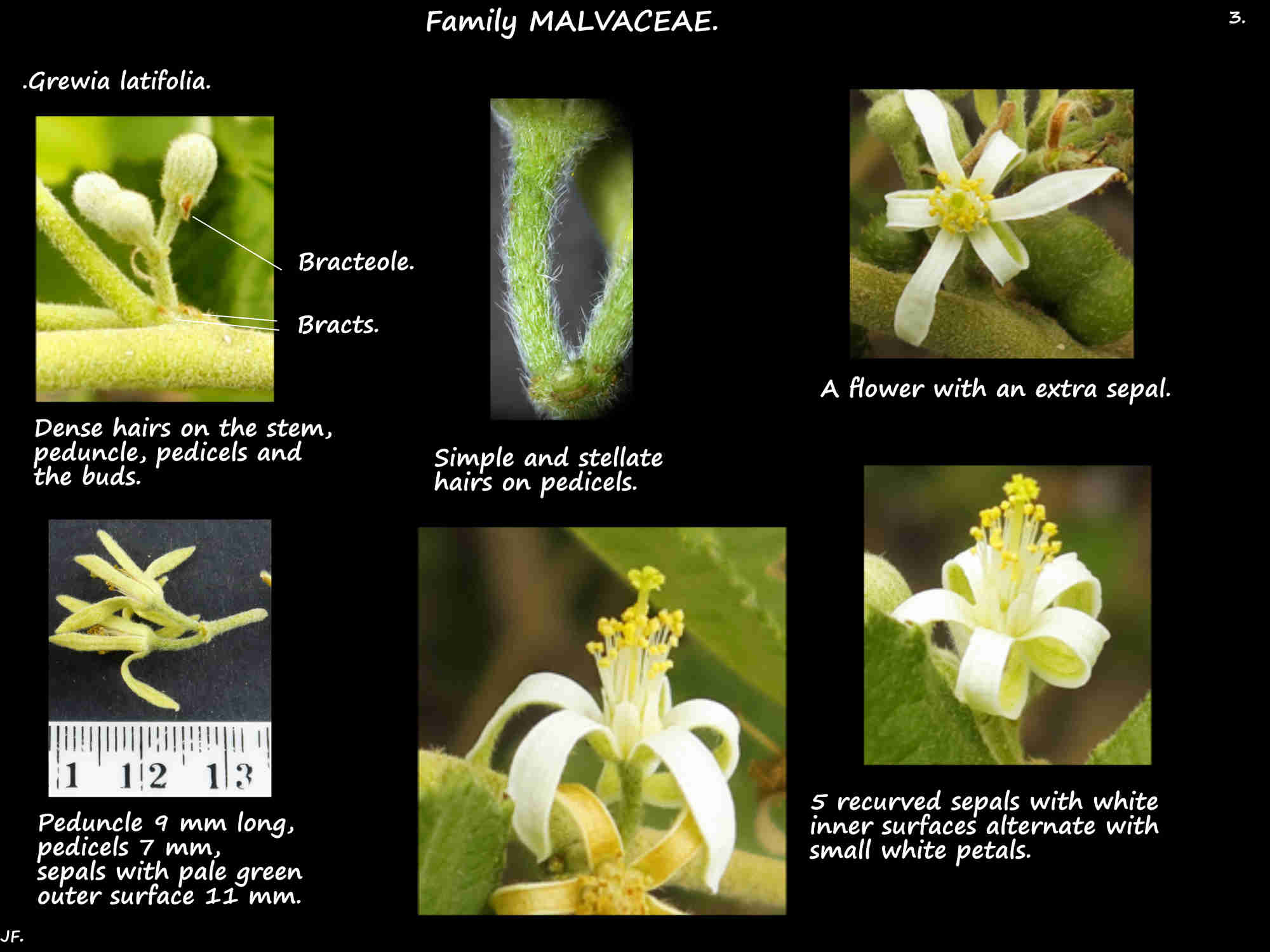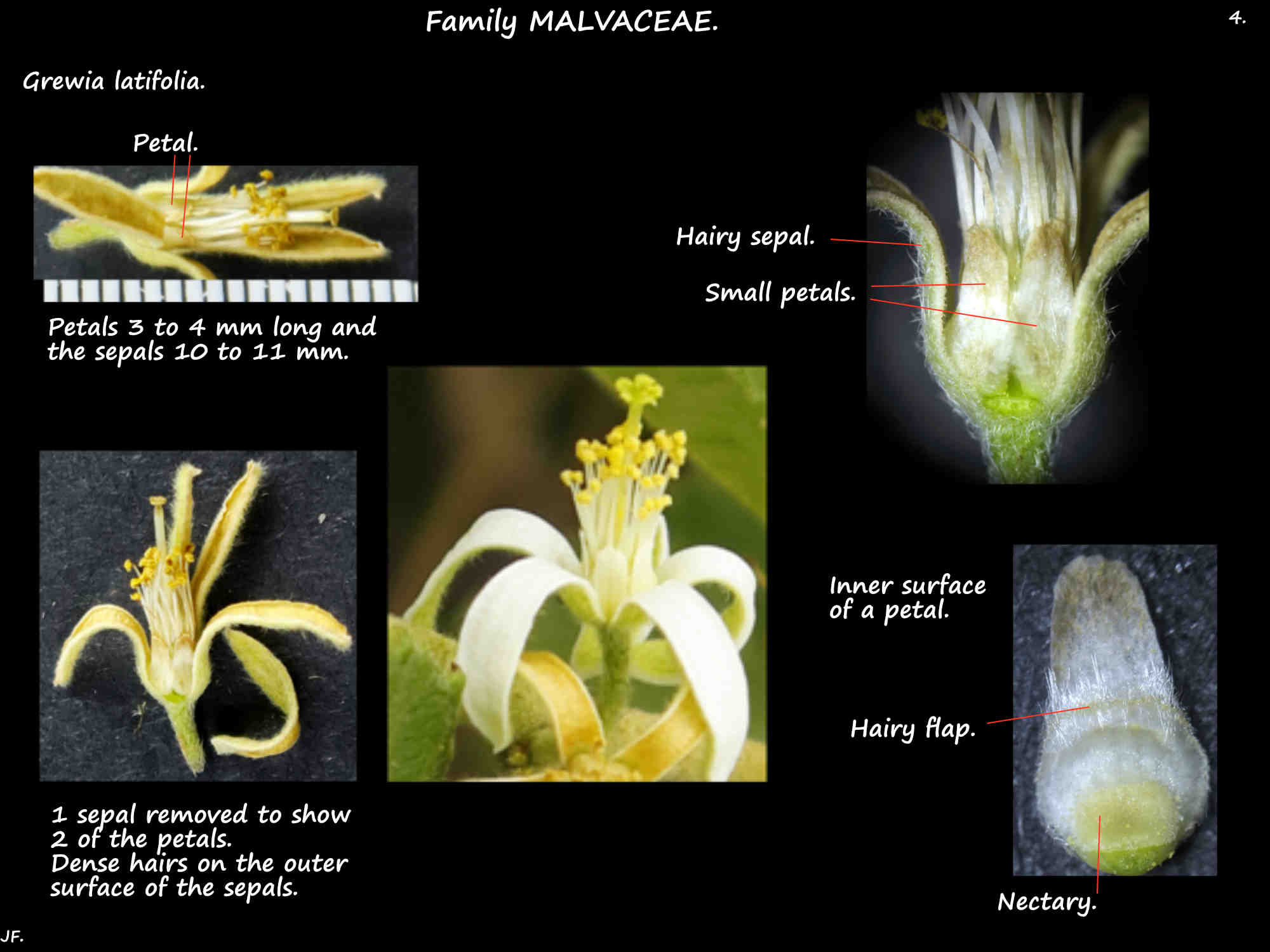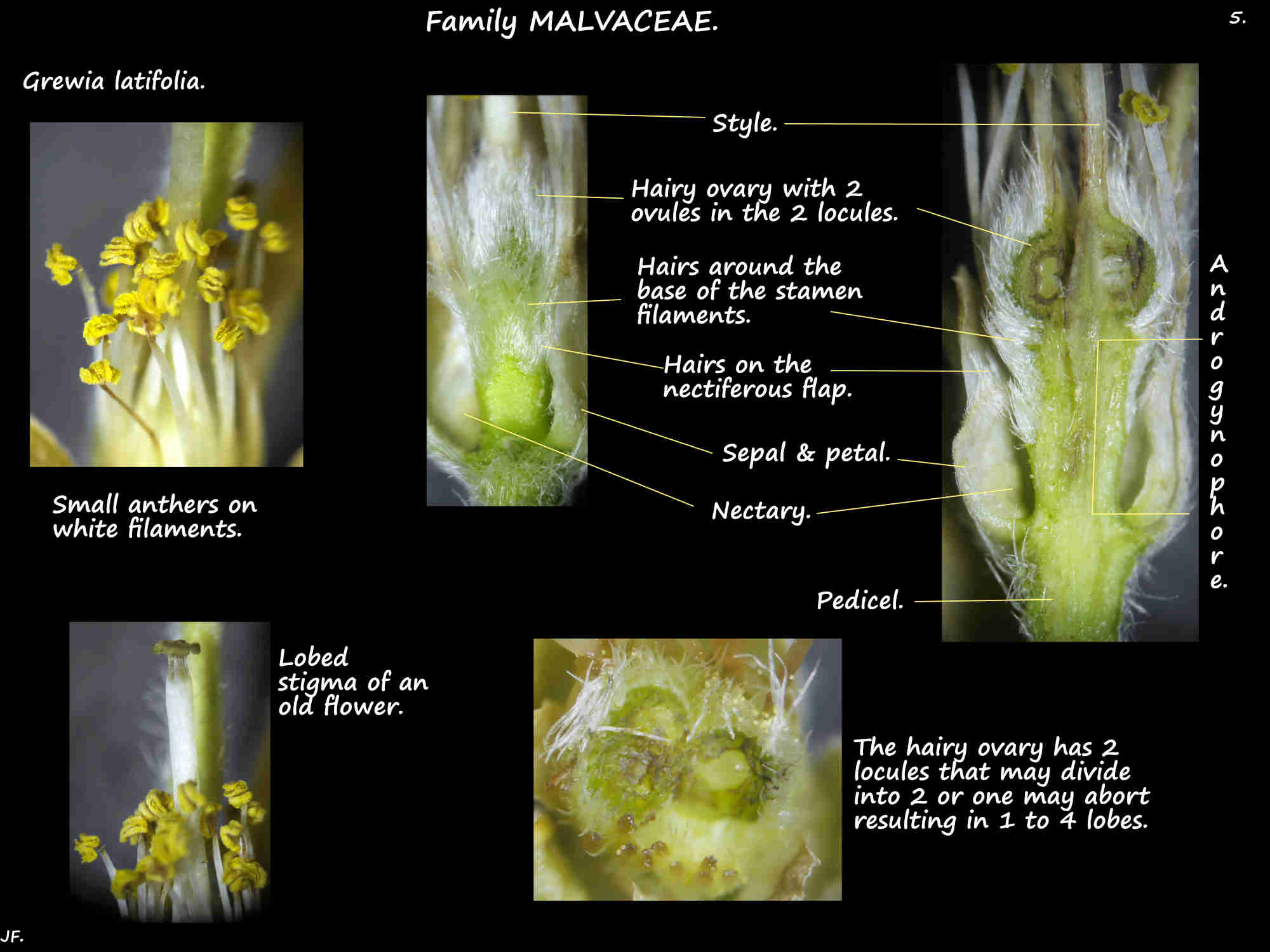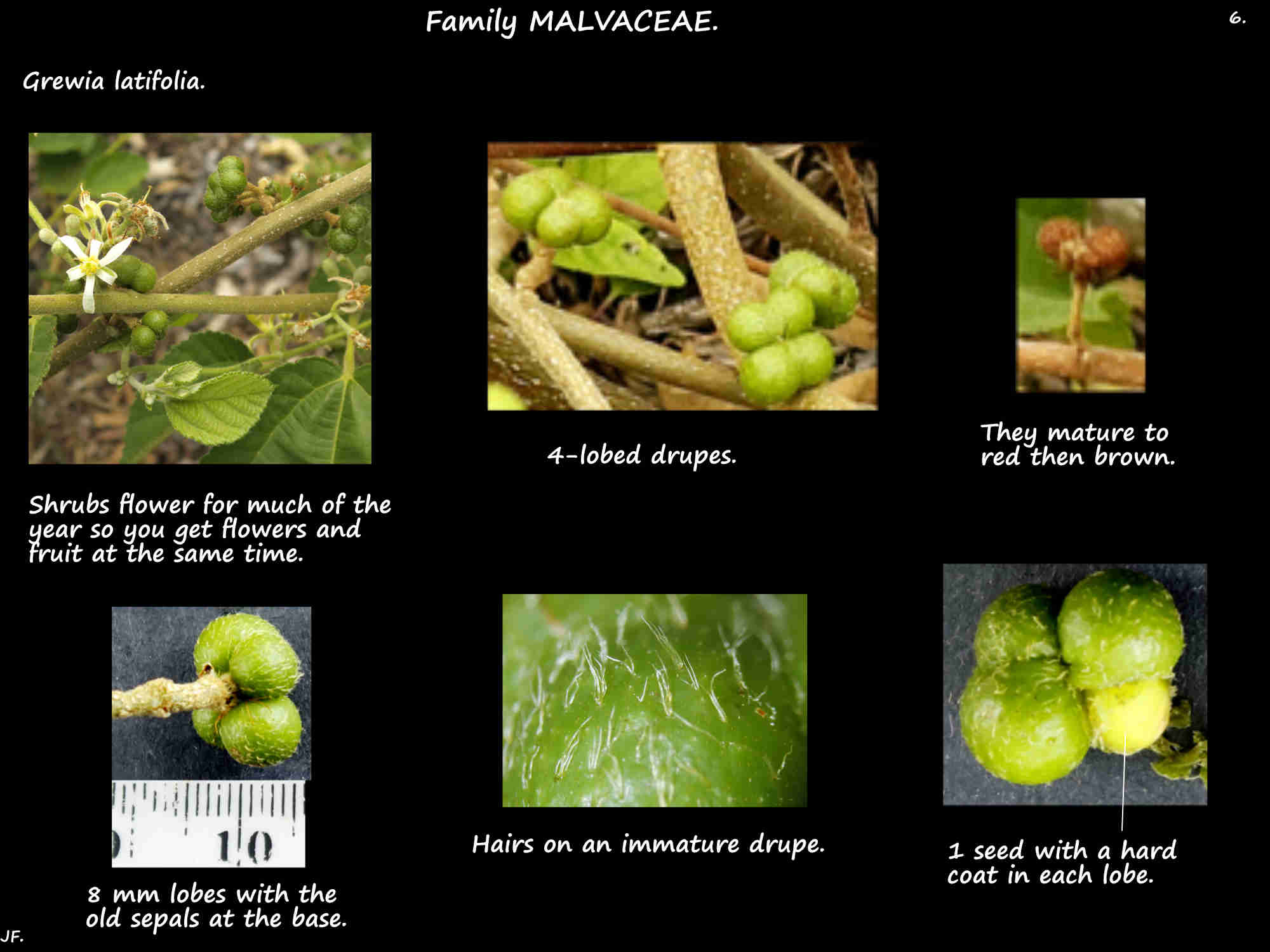Grewia latifolia.
Commonly known as Dog’s balls or more elegantly as Emu berry they are endemic in S. E. Queensland.
They are occasionally seen in gardens or public spaces.
They are deciduous much-branched shrubs 2 to 3 (1 to 6) m high.
The thin stems have stellate hairs.
The leaves are alternate and distichous (in 2 ranks).
They are on petioles 5 (10) mm long.
The small hairy stipules fall early.
The broad ovate blades are mostly less than 10 cm long and up to 8 cm wide.
The base is heart-shaped and the tip is pointed.
The edge is often slightly lobed and it has fine irregular teeth.
The rough green upper surface has some hairs and the paler lower surface has dense hairs.
There are typically 5 veins from the base and all the veins are very prominent on the lower surface.
The axillary inflorescences often have 2 or 3 flowers.
There may be more than one inflorescence in each axil.
The peduncles, pedicels, bracts and bracteoles are all densely hairy.
Many of the white hairs are stellate but some are simple.
Flowers have 5 free narrow sepals up to around 1 cm long.
The outer surface is pale green and densely hairy and the inner white surface is smooth.
The 5 white petals, only 3 to 4 mm long alternate with the sepals.
At the base of the inner surface of the petals is a narrow flap with hairs on the margin.
There is a large yellow nectary under the flap.
The androgynophore is around 4 mm long.
The lower part is smooth and the upper section is hairy.
The up to 40 or so stamens insert onto the upper part of the androgynophore.
The filaments are white and the small yellow anthers open via longitudinal slits.
The small green ovary is covered in long white hairs.
The single white style extends past the stamens and has a wide stigma that may be lobed.
The fruit are drupes around 1 cm across that mature from green to red then brown.
The 2 to 4 hairy lobes each have 1 seed.
J.F.
